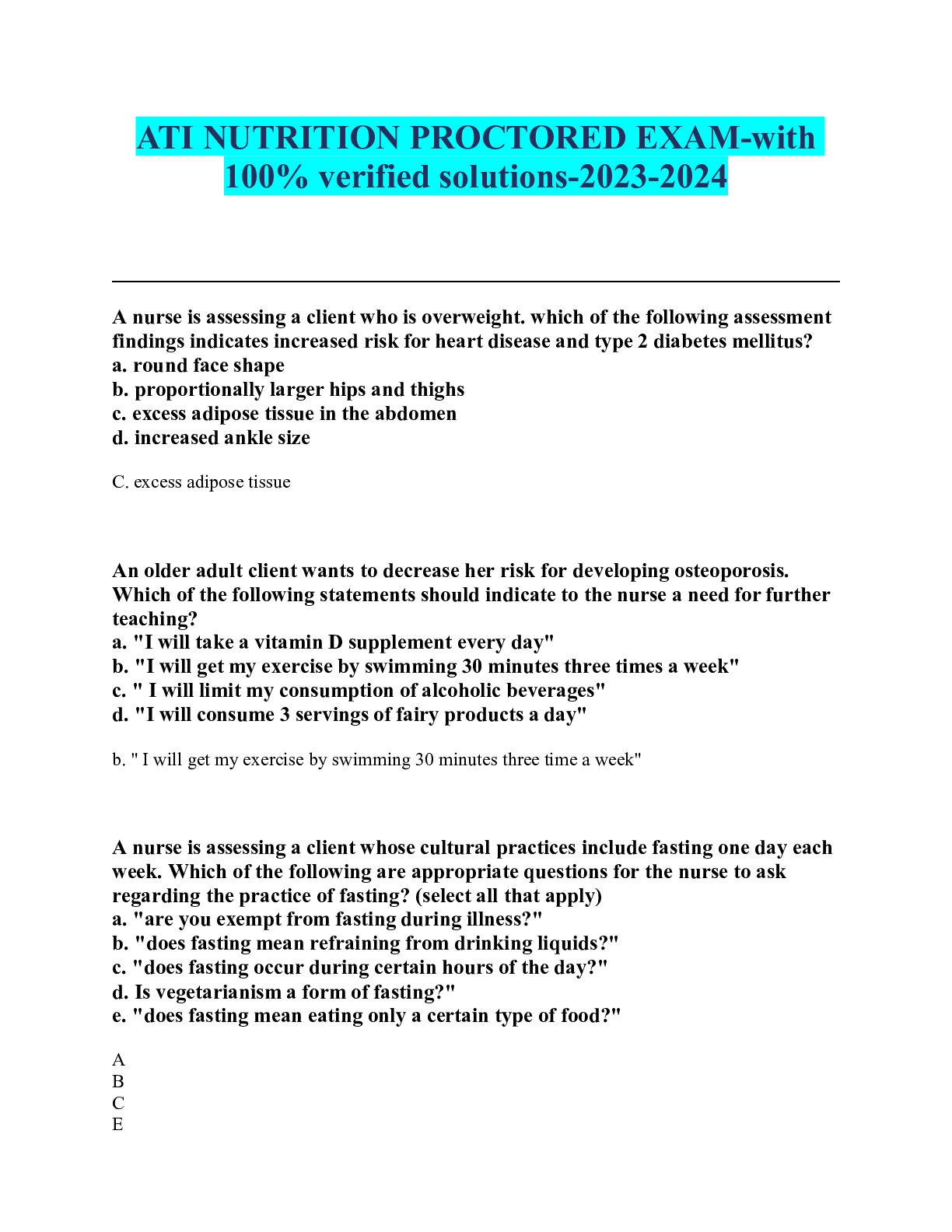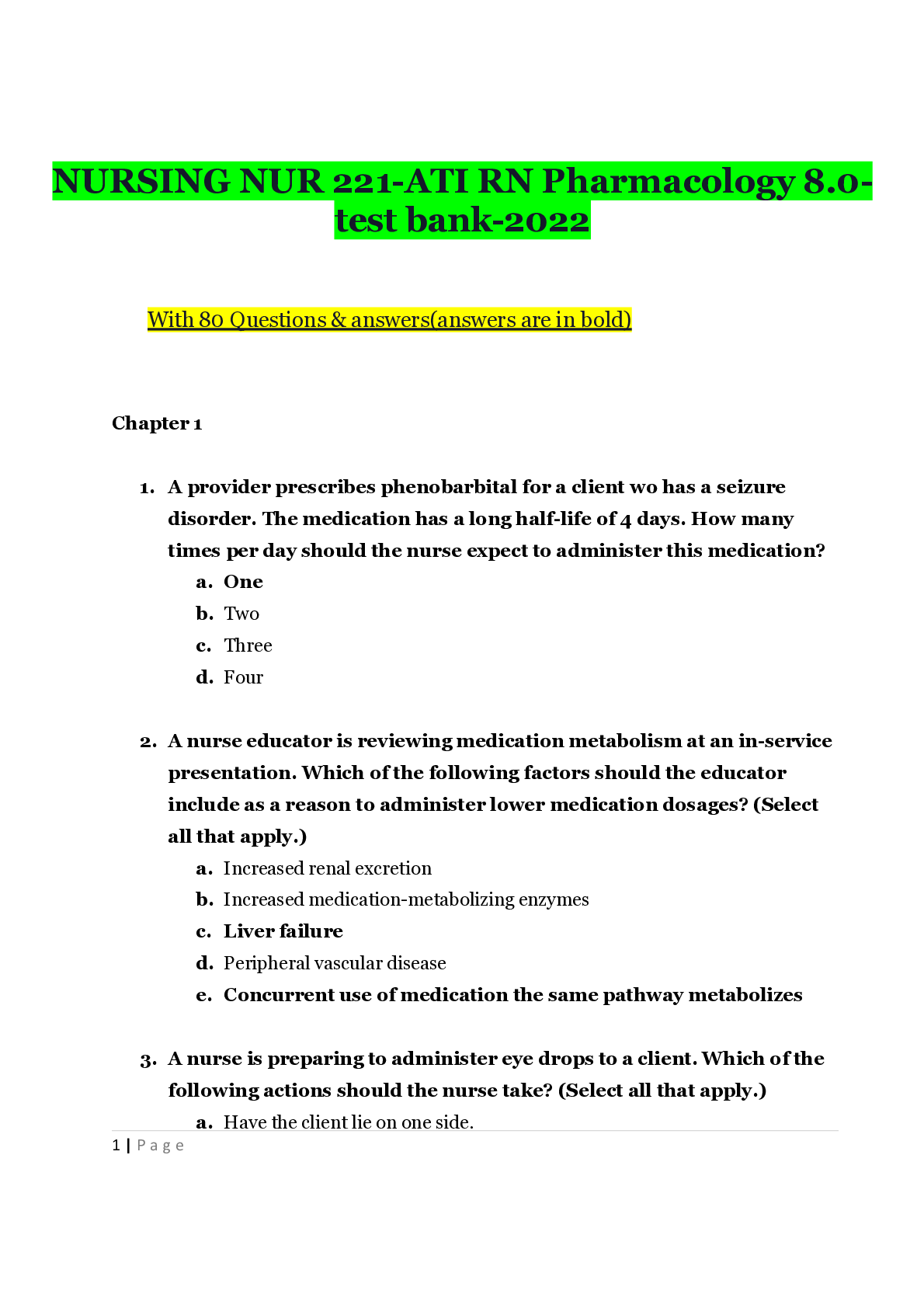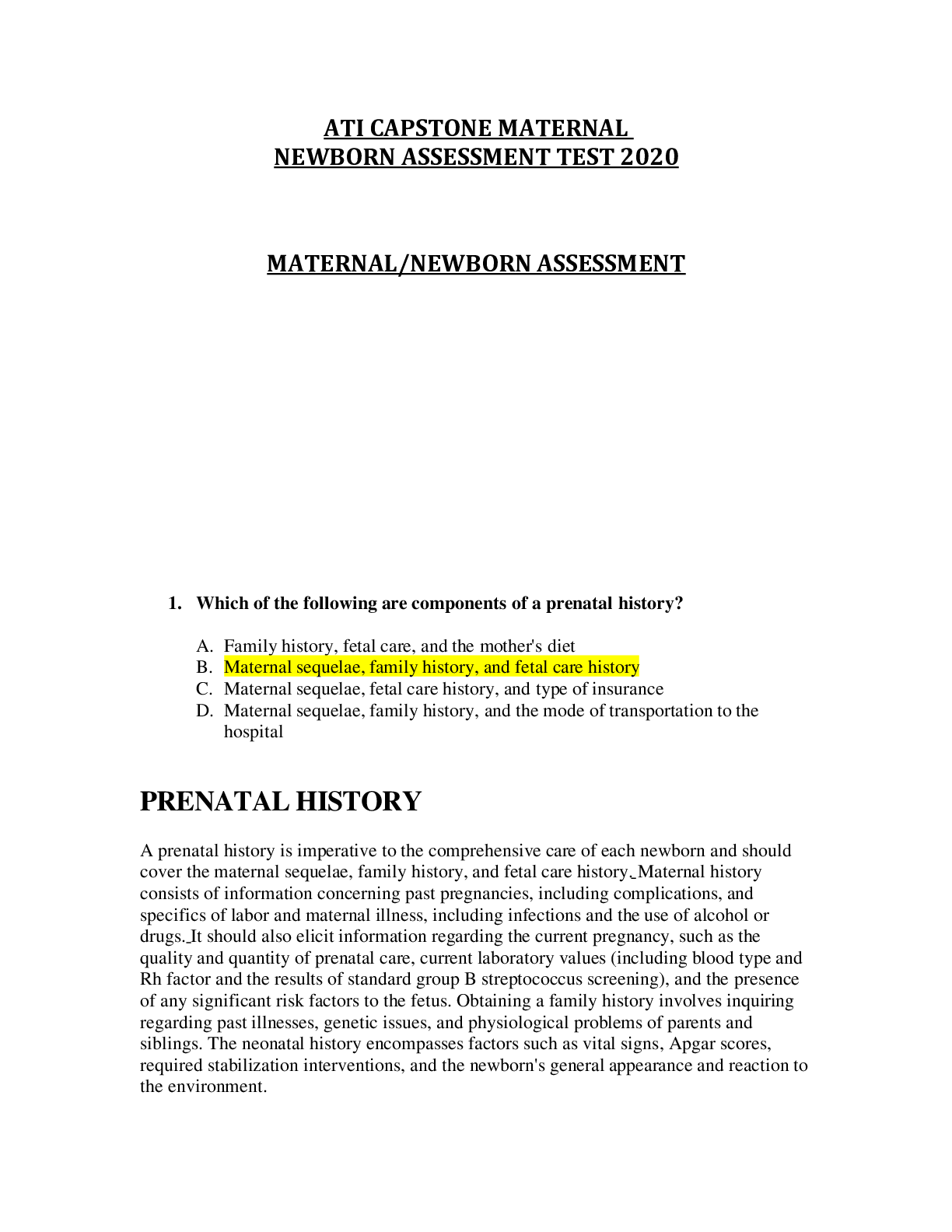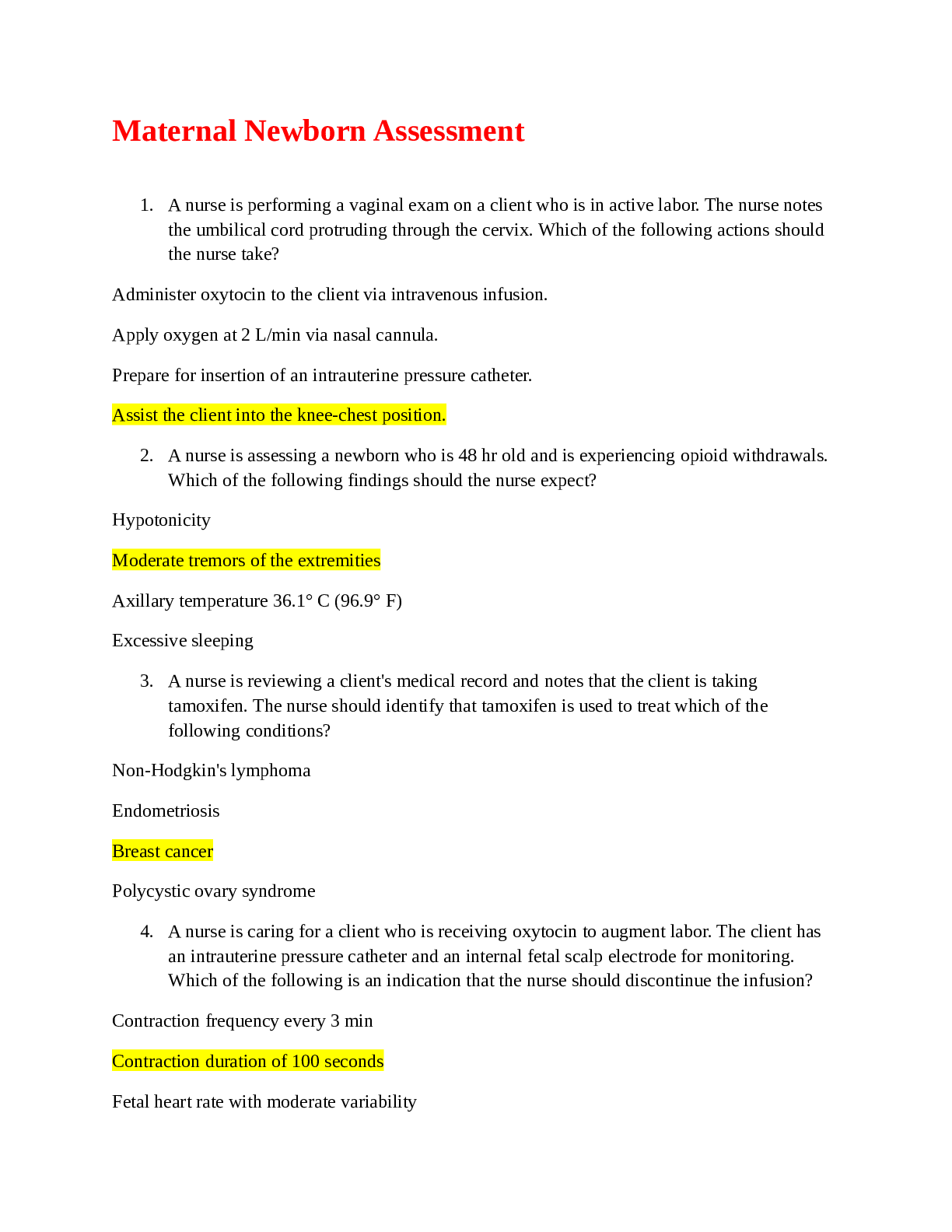ATI CAPSTONE MATERNAL NEWBORN ASSESSMENT -with 100% verified answers-2022
Document Content and Description Below
ATI CAPSTONE MATERNAL NEWBORN ASSESSMENT -with 100% verified answers-2022 1. Which of the following are components of a prenatal history? A. Family history, fetal care, and the mother's diet... B. Maternal sequelae, family history, and fetal care history C. Maternal sequelae, fetal care history, and type of insurance D. Maternal sequelae, family history, and the mode of transportation to the hospital PRENATAL HISTORY A prenatal history is imperative to the comprehensive care of each newborn and should cover the maternal sequelae, family history, and fetal care history. Maternal history consists of information concerning past pregnancies, including complications, and specifics of labor and maternal illness, including infections and the use of alcohol or drugs. It should also elicit information regarding the current pregnancy, such as the quality and quantity of prenatal care, current laboratory values (including blood type and Rh factor and the results of standard group B streptococcus screening), and the presence of any significant risk factors to the fetus. Obtaining a family history involves inquiring regarding past illnesses, genetic issues, and physiological problems of parents and siblings. The neonatal history encompasses factors such as vital signs, Apgar scores, required stabilization interventions, and the newborn's general appearance and reaction to the environment. 2. Which of the following complications may develop in infants of diabetic mothers? A. Jaundice B. Hypoglycemia C. Shoulder dystocia D. All of the above Gestational diabetes affects approximately 4% of all pregnancies. Factors that place women at higher risk for developing gestational diabetes include age of 25 years or older, obesity, and a family history of type 2 diabetes.The infant of a diabetic mother, regardless of whether the cause is gestational diabetes or pre-existing disease, is affected in a multitude of ways. The effects are more pronounced in "brittle" cases. Fetuses that are continuously exposed to high blood glucose levels will produce more insulin in response, leading to excessive fetal growth and infants who are large for gestational age. This in turn can place them at higher risk for birth trauma and shoulder dystocia. In the neonatal CONTINUED.... [Show More]
Last updated: 1 year ago
Preview 1 out of 17 pages

Reviews( 0 )
Document information
Connected school, study & course
About the document
Uploaded On
Aug 23, 2022
Number of pages
17
Written in
Additional information
This document has been written for:
Uploaded
Aug 23, 2022
Downloads
0
Views
89























